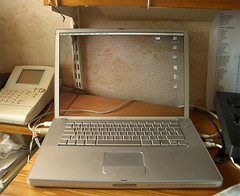The Lion, The Air, & The App Store
The Future Of The Mac & Computing
In October of last year Apple held their “Back To The Mac” event and made several announcements. Chief among them was a new MacBook Air, a preview of the next version of OS X, and a new App Store for the Mac. Though by the time you read this, the Verizon iPhone will have been announced and that will be the story on everyone’s lips, I got to wondering if we won’t look back at this October event and see it as far more pivotal than we first realized. [Read more…]

 Mac OS X 10.6.6 and the brand new Mac App Store were released just days ago, as promised, even showing up a few hours before the official 9 AM PST start time. I found myself, like many other Mac fanatics, breaking open the virtual shrink-wrap on the new store and having a look around.
Mac OS X 10.6.6 and the brand new Mac App Store were released just days ago, as promised, even showing up a few hours before the official 9 AM PST start time. I found myself, like many other Mac fanatics, breaking open the virtual shrink-wrap on the new store and having a look around.

Recent Comments